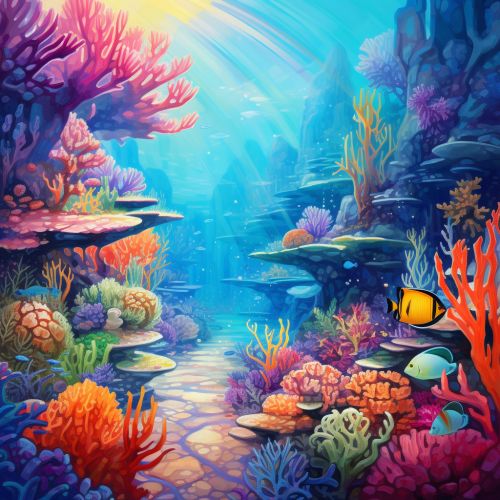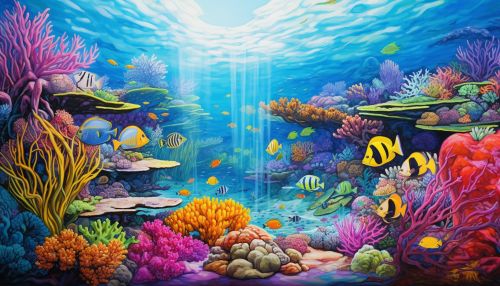Symbiosis in Coral Reef Ecosystems
Introduction
Coral reef ecosystems are among the most diverse and complex ecosystems on the planet. They are home to a wide variety of marine organisms, and are characterized by a high degree of symbiotic relationships. Symbiosis in coral reef ecosystems is a complex and fascinating subject, involving a wide range of organisms and intricate interactions.


Symbiosis in Coral Reefs
Symbiosis is a biological relationship in which two different species live in close proximity to each other and interact in a way that benefits one or both of the organisms. In coral reef ecosystems, symbiosis is a fundamental process that contributes to the high biodiversity and structural complexity of these habitats.
Types of Symbiosis
There are three main types of symbiotic relationships that occur in coral reef ecosystems: mutualism, commensalism, and parasitism.
Mutualism
Mutualism is a type of symbiotic relationship in which both species benefit. The most well-known example of mutualism in coral reef ecosystems is the relationship between corals and zooxanthellae, a type of microscopic algae. The zooxanthellae live within the coral's tissues and provide the coral with nutrients through photosynthesis. In return, the coral provides the zooxanthellae with a protected environment and access to light for photosynthesis.
Commensalism
Commensalism is a type of symbiotic relationship in which one species benefits while the other is neither helped nor harmed. An example of commensalism in coral reef ecosystems is the relationship between certain species of fish, such as the clownfish, and sea anemones. The clownfish uses the anemone for protection from predators, while the anemone is neither helped nor harmed by the presence of the clownfish.
Parasitism
Parasitism is a type of symbiotic relationship in which one species benefits at the expense of the other. Parasitism in coral reef ecosystems is less common than mutualism and commensalism, but it does occur. For example, certain species of isopods and copepods are known to parasitize fish in coral reef ecosystems.
Role of Symbiosis in Coral Reef Ecosystems
Symbiosis plays a crucial role in the functioning and survival of coral reef ecosystems. It contributes to the high biodiversity of these habitats and helps to maintain the structural complexity of the reefs.
Biodiversity
The complex web of symbiotic relationships in coral reef ecosystems contributes to the high biodiversity of these habitats. Symbiosis allows for a greater variety of species to coexist and thrive in the same environment.
Structural Complexity
Symbiosis also contributes to the structural complexity of coral reefs. The relationship between corals and zooxanthellae, for example, allows for the growth and development of the coral colonies that form the physical structure of the reefs.
Threats to Symbiosis in Coral Reefs
Coral reef ecosystems are facing a number of threats that can disrupt symbiotic relationships and have serious impacts on the health and survival of these habitats.
Climate Change
Climate change is one of the biggest threats to coral reef ecosystems. Rising sea temperatures can lead to coral bleaching, a phenomenon in which corals expel their symbiotic zooxanthellae, leading to the death of the coral.
Pollution
Pollution from land-based sources can also have detrimental effects on coral reef ecosystems. Nutrient runoff from agriculture can lead to eutrophication and the overgrowth of algae, which can smother corals and disrupt symbiotic relationships.
Conclusion
Symbiosis in coral reef ecosystems is a complex and fascinating subject. It plays a crucial role in the functioning and survival of these habitats, contributing to their high biodiversity and structural complexity. However, these ecosystems are facing a number of threats that can disrupt symbiotic relationships and have serious impacts on the health and survival of these habitats.
